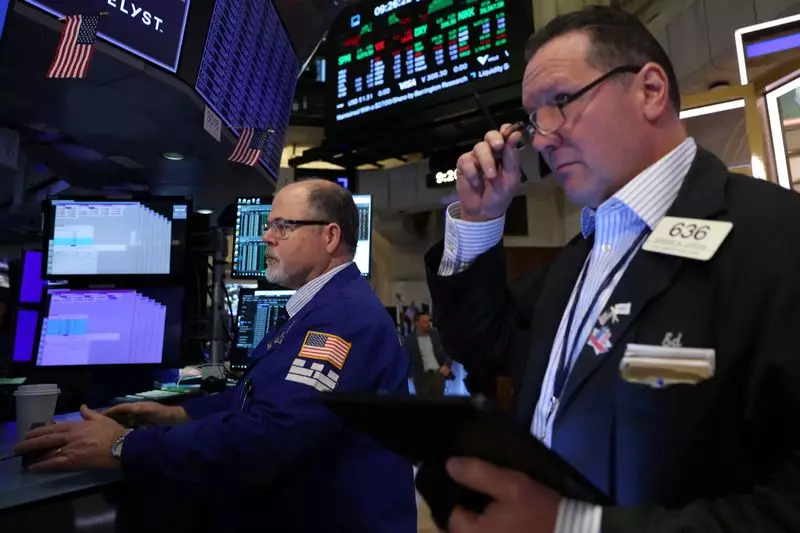The financial markets have recently demonstrated a renewed vigor, with significant gains led by Wall Street’s major indexes. This sharp rise is attributed to a complex interplay of economic indicators and investor perceptions following the actions of the new administration. The economic landscape remains heavily influenced by the delicate balance of international relations, particularly concerning tariffs and trade agreements. Analyzing these dynamics reveals deeper implications for market confidence and future projections.
Recent stock performance suggests that investor sentiment is closely following political maneuvers. The increase in the S&P 500 and the Dow—reaching heights not seen in over a month—indicates a cautious optimism surrounding President Donald Trump’s initial approach to economic policy. Investors were particularly relieved to find that the anticipated blanket tariffs were not immediately imposed, alleviating fears of a sudden downturn due to protectionist measures that could escalate into a wider trade war.
Carol Schleif, chief market strategist at BMO Private Wealth, encapsulated the mood in the market, reflecting a blend of surprise and relief amongst investors. The lack of immediate tariff announcements has led many to believe that this administration may adopt a more nuanced strategy toward international trade—using tariffs as a negotiation tool rather than a first-line tactic. This possible shift in strategy presents an opportunity for investors to reevaluate their positions in light of an evolving political landscape.
Diving deeper into sector performance reveals a mixed bag. Despite the overall positive trajectory of the market, the energy sector declined slightly, reflecting underlying concerns regarding commodity prices and broader economic impacts. Conversely, the industrial sector benefited substantially from strong quarterly performances from companies like 3M, which reported better-than-expected profits, leading to a substantial rise in its stock. This divergence among sectors underscores the structural complexity within the market, where investor behavior is influenced by multiple factors, including individual company performance and broader geopolitical trends.
Furthermore, the small-cap Russell 2000 index’s outperformance suggests a healthy shift in risk appetite. Small-cap stocks typically reflect a greater exposure to domestic economic conditions, signaling confidence in the U.S. economy’s resilience amidst global uncertainties. This phenomenon indicates a potential reallocation of capital as investors seek opportunities tethered to domestic growth rather than those dependent on international trade outcomes.
While markets celebrate recent gains, inflation looms large as a critical concern. With inflation rates remaining above the Federal Reserve’s 2% target, many economists predict a conservative approach to monetary policy moving forward. This tension between supporting growth and managing inflation creates uncertainty; a failure to address rising prices could constrain the Fed’s ability to accommodate an economic expansion through lower interest rates.
Recent indications suggest that the Federal Reserve may opt to maintain existing borrowing costs in the near term, citing the need for stability amidst fluctuating economic signals. However, the anticipated interest rate cut in June serves as a crucial focal point, accentuating the watchfulness of traders who are gauging the timing and extent of future monetary easing. Such dynamics may provoke unpredictability as market participants navigate the intersection of fiscal and monetary policies.
Stock-specific news continues to play an instrumental role in shaping market dynamics. For instance, Walgreens faced a substantial drop in its stock price after allegations regarding unlawful prescriptions, contrasting sharply with Moderna’s significant gains following favorable government funding for vaccine development. These individual stock movements provide a window into how broader societal issues, including healthcare and regulatory scrutiny, impact corporate performance and investor confidence.
The ratio of advancing to declining stocks showcases a bullish sentiment among investors. The significant number of new highs on both the New York Stock Exchange and Nasdaq indicates robust market participation and a favorable environment for equities. However, the specter of regulatory challenges and global trade uncertainty may temper enthusiasm, as participants adjust strategies in anticipation of potential hurdles.
While Wall Street exhibits resilience reflected in its recent performance, underlying concerns regarding trade policies, inflation, and individual corporate challenges remain germane. The trajectory of the market will heavily depend on the administration’s forthcoming policies and their ability to foster an environment conducive to both domestic growth and global economic stability. As investors remain vigilant, the critical task will be to navigate these choppy waters with an informed and adaptive strategy.

